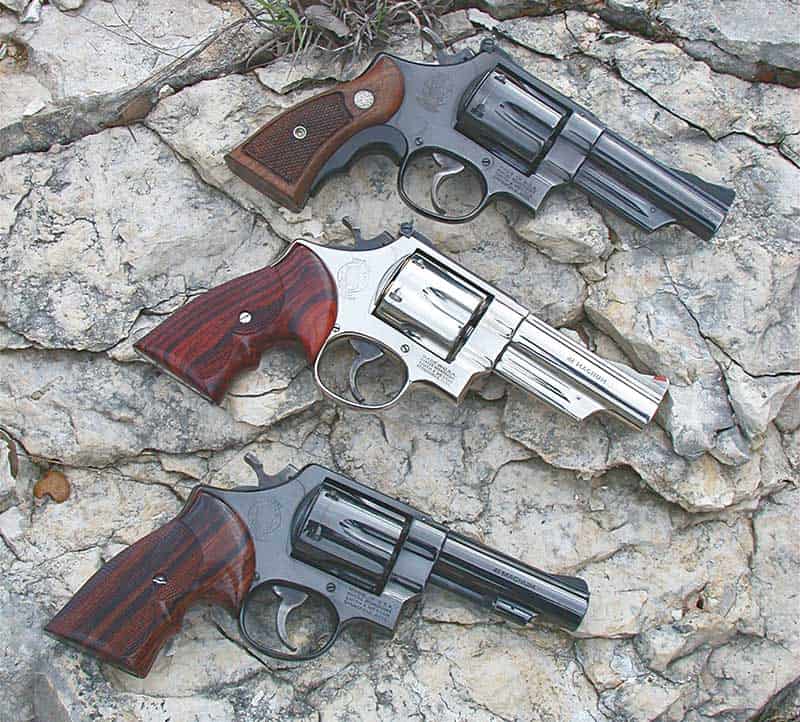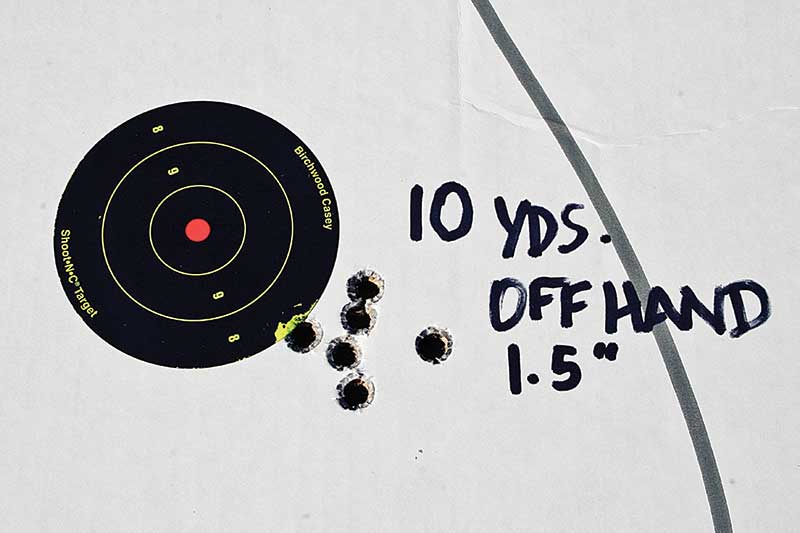The Resurrection
Smith & Wesson's Model 58 .41 Magnum
As part of the continuing program of resurrecting older and popular models of Smith & Wesson revolvers, the Model 58 .41 Magnum has been brought back into production. Addressing and hopefully appeasing what is often considered a somewhat cultist group of shooters, the .41 Magnum, in fact, might have been singled out by a sharp group of individuals who saw and continue to see the advantages of this mid-size caliber handgun.
Introduced in the mid ’60s, the .41 Magnum was considered by some to be the optimum self-defense cartridge and load for American law enforcement use. Historically, it can be traced to a wildcat cartridge called the .400 Eimer, which was on the drawing boards as early as the 1920s. In its initial introduction, the Smith & Wesson .41 Magnum was brought on the market in 1963-64 in the form of the named cartridge mated to the Smith & Wesson Model 57. The Model 57 was an adjustable sighted, 6-shot, large N-frame revolver. Shortly afterward, the factory folks at Smith & Wesson introduced a beefed up Model 10 fixed-sight version numbered the Model 58 that might be one of the best examples of a true fighting handgun—if there is such a thing.
Often with dismal results, the .38 special was for many years a pretty universal cartridge for the law enforcement community. Its failures are well noted and early attempts, such as the 200-grain .38-44 Super Police load, still did not bring the .38 to acceptable standards of stopping power. The .357 Magnum was the upgraded version of the .38, but it still lacked cross-sectional density, which is always helpful in a fighting handgun cartridge.
The .44 Magnum was, in fact, too much gun for general police use and the closest it came to solving the problem was the Remington 240-grain mid-range load. The .41 Magnum gave better cross-section density than the .38 Special and the bullet weight at 210 grains could be an attention getter to the misbehaving.
Two factory loadings were available. The barnburner was the 210-grain jacketed softpoint, which ran the gates at a smoking 1,500 feet per second declared and a probably true 1,400 fps. The second load was a 210-grain lead semiwadcutter cruising across the chronograph at a nominal 1,150 fps declared, but was in reality probably closer to 900 fps in the factory loading. It was plenty of load with plenty of projectile for the average shooter, and probably on the verge of too much.
I think one of the key ingredients to the failure of the .41 Magnum to achieve general acceptance in the law enforcement communities was the unclear boundary between the two loads and knowing the difference between the two. Probably if the truth was known, had the .41 Magnum been loaded to a nominal 850 to 900 fps with a 210-grain lead wadcutter from the get go I believe it would have been force to be reckoned with.
At 10 yards free hand, no rest, I shot CorBon DPX 180-grain hollowpoints for the test and the Model 58 placed them (with me attached) inside a nominal 1.5″. Moving at 1,300 fps, the 180-grain DPX projects a true 676 foot-pounds of energy downrange. CorBon is one of the few who actually load what they say they are loading on the box. The rounds were stout and impacted steel had a distinct sound not often heard when 9mm or .40 S&W calibers are used on plates.
As mentioned before, this revolver is part of the program to bring back into the market older revolvers and this Model 58 falls into that category. The new Model 58 has a 4″ barrel and fixed sights like its predecessor. The gun I had has the old-style cylinder latch and square butt, which is, of course, correct and true to the gun’s linage.
The stocks are nicely done wood with silver Smith & Wesson medallions inlaid. This grip style and these stock panels are a good candidate for a Tyler T-grip filler for anyone who actually wants to carry and shoot the gun. With the filler or larger stocks the gun is a bit of a knuckle buster with full-power loads, which was the whole point of the exercise.
Total original production was a nominal 20,200 made during the years of 1964-1977.
The gun may be an example of a dud or, in reality, it may have been a gun and caliber ahead of its time. Either way, people who want one or wanted one to shoot, now have the chance thanks to the new Smith & Wesson Model 58 .41 Magnum being brought back online.
Model 58
Maker: Smith & Wesson
2100 Roosevelt Ave.
Springfield, MA 01104
(800) 331-0852
www.smith-wesson.com
Action: Double-action revolver
Caliber: .41 Magnum
Capacity: 6
Barrel length: 4″
Weight: 41 ounces
Finish: Blue or nickel plated
Sights: Fixed
Grips: Checkered wood
Price: $1,090
Holster 5 Shot Leather LLC
18018 N. Ligerwood Ct.
Colbert, WA 99005
(509) 844-3969
www.5shotleather.com
Ammunition CorBon/Glaser
P.O. Box 369, Sturgis, SD 57785
(800) 626-7266
www.dakotaammo.net
Custom Stocks Craig Spegel
P.O. Box 387, Nehalem, OR 97131
(503) 368-5653
www.craigspegel.com
Tyler Mfg.
P.O. Box 94845
Oklahoma City, OK 73143
(800) 654-8415
www.t-grips.com






